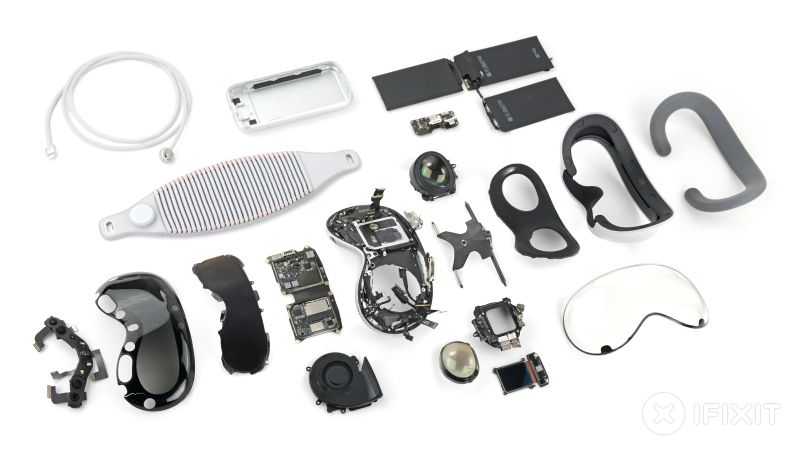Apple Vision Pro’s device teardown reveals cutting edge design, and some tradeoffs that are expected from a first generation device.
Here’s a quick look at the Vision Pro’s technological advancements, design choices, and the implications for repairability and user experience.
EyeSight Display:
The Vision Pro’s EyeSight display, a lenticular screen that simulates the user’s eyes, is a testament to Apple’s innovative spirit. This feature aims to foster a more immersive and natural user interaction. However, it has drawn mixed reactions for its dimness and low resolution, sparking debates about its practicality.
Material and Construction:
The Vision Pro distinguishes itself with a bubble glass front, setting it apart from competitors. This choice not only enhances its aesthetic but also contributes to its unique identity in the wearable market.
R1 and M2 Chips:
At the heart of the Vision Pro are the R1 and M2 chips, driving its performance. The R1 chip, dedicated to processing input from an array of sensors, ensures minimal latency, crucial for augmented reality experiences. The M2 chip, borrowed from Apple’s Mac lineup, provides the computing power necessary for the device’s advanced functionalities.
The Hidden Battery:
At 34 grams, the glass may not be heavy on its own, but fully kitted out with the battery the Vision Pro weighs over a kilogram.
Here’s where Apple has made a design trade-off. Carefully hidden in most publicity shots is the external battery, which rides along in your pocket rather than on your headset which weighs about 353 grams. As in the early days of VR, integrating the battery as it is now would make the device crazy heavy.
Challenges in Repairability:
The teardown reveals a device brimming with technology, from the EyeSight display to an array of sensors, complicating repairs. The addition of another screen and connectors introduces potential failure points, raising concerns over the device’s longevity and repair costs.
Conclusion:
While the EyeSight display and the integration of R1 and M2 chips highlight Apple’s push for innovation, they also present new challenges in terms of repairability and practical utility.
Vision Pro looks great for a first generation version. As we saw with the iPhone, we should expect this form factor to improve in the coming years.
Data: iFixit
#applevisionpro #visionpro #design #product #spatialcomputing

